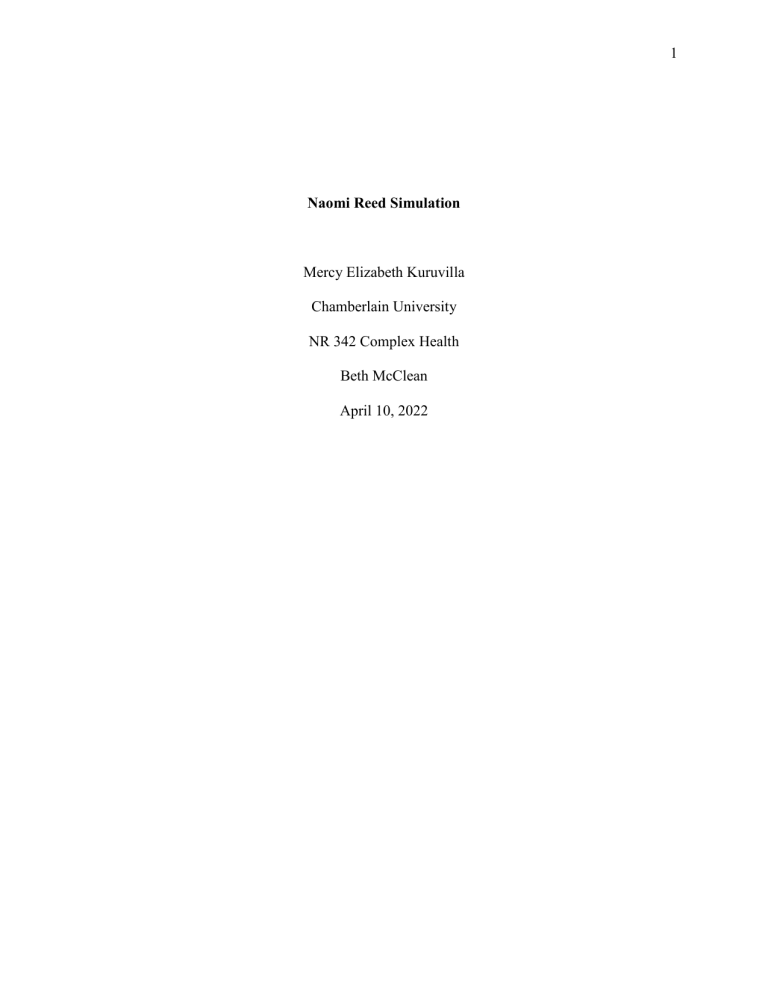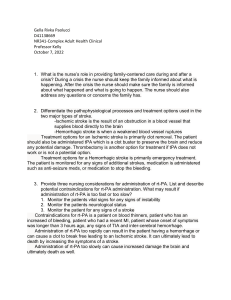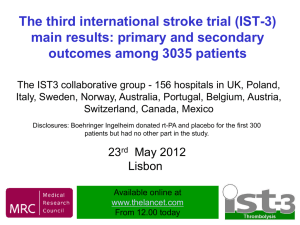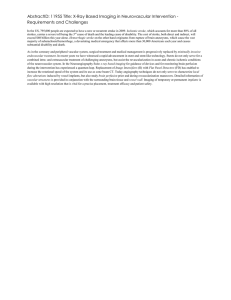
1 Naomi Reed Simulation Mercy Elizabeth Kuruvilla Chamberlain University NR 342 Complex Health Beth McClean April 10, 2022 2 Naomi Reed Simulation 1. What is the nurse’s role in providing family-centered care during and after a crisis? Family centered care is care that involves the family members of a patient. During a crisis, it is especially overwhelming to worry about your loved ones and their health; and that’s where the nurse comes in, in order to teach, educate, and help the family understand what is wrong with their loved one and how to help them through their medical journey. Family care can revolve around getting the family involved in treatments, being a support system when the patient needs it and educating about how to protect and care for their loved ones. 2. Differentiate the pathophysiological processes and treatment options used in the two major types of stroke? There are two major types of strokes; hemorrhage and ischemic. Hemorraghic stroke is when a blood vessel in the brain busts, which disconnects the vein, ergo blood is not reaching certain parts of the brains. In an ischemic stroke, a blood clot is lodged into a blood vessel, which stops the blood from reaching part of the brains. When it comes to a hemorraghic stroke, the patient undergoes a procedure where the surgeon threads a catheter into the vessel to find the rupture and repair it. When it comes to an ischemic stroke, medications such as rt-PA which are clotted dissolving medications, are given in order to remove the clot and return the blood flow. 3. Provide 3 nursing considerations for administration of rt-PA and describe potential contraindications for rt-PA administration. What may result if administration of rt-PA is too fast or too slow? rt-PA is a clot dissolving drug and therefore there are interventions that we as nurses should check. For instance, our first priority is vital signs. Vital signs are the first and foremost assessment tool that we can use in order to treat our patients. Since rt-PA is a very serious drug, 3 initiating protocol against bleeding so that no massive hemorrhage bleeding occurs. Some contraindications of this drug; are actively bleeding, hemorrhagic stroke, uncontrolled hypertension, recent major surgery, advanced age, or a recent myocardial infarction. When this drug is administered too fast it results in an increased risk for hemorrhaging and if it is not given properly and is given too slow, then the drug won’t be effective.





